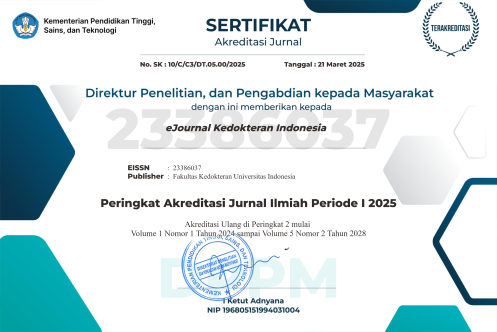Cellulitis and Bullous Erysipelas in a Geriatric Patient
DOI:
https://doi.org/10.23886/ejki.12.633.209Keywords:
cellulitis, erysipelas, geriatric, skin infectionAbstract
Erysipelas and cellulitis are common infections of the skin. Erysipelas is a superficial infection affecting the upper layers of the skin, while cellulitis affects the deeper tissues. Bullous formation represents a severe clinical condition of erysipelas. We report a case of cellulitis concurrent with bullous erysipelas focusing on diagnostic and treatment challenges in a geriatric patient with comorbid. A 70-year-old male with a history of diabetes mellitus was admitted to the emergency department with a chief complaint of painful erythematous, warm on palpation, swelling and blistering on his right lower leg for one week. The wound culture was sterile. Cellulitis and bullous erysipelas were determined as the diagnosis. The patient was treated concurrently with intravenous ampicillin-sulbactam, as well as incision and debridement. Clinical symptoms were improved after several days of hospitalization. Bullous erysipelas is an aggressive form of erysipelas that responds less well to therapy. Microbiological culture in erysipelas and cellulitis are negative in up to 70% of cases, including in our patient. Thus, the diagnosis was made based on clinical examination. The administration of intravenous broad-spectrum antibiotic ampicillin-sulbactam and additional incision and debridement significantly improved the patient. In conclusion this case of cellulitis and bullous erysipelas in a geriatric patient with diabetes mellitus was successfully treated with intravenous broad-spectrum antibiotic ampicillin-sulbactam and additional incision and debridement.
Downloads
Downloads
Published
How to Cite
Issue
Section
License
Copyright (c) 2024 David Dwiadiputra Hartanto, Agung Mohamad Rheza, Shannaz Nadia Yusharyahya, Lili Legiawati, Rinadewi Astriningrum, Sondang P. Sirait

This work is licensed under a Creative Commons Attribution-NonCommercial 4.0 International License.
Accepted 2024-07-25
Published 2024-09-11



